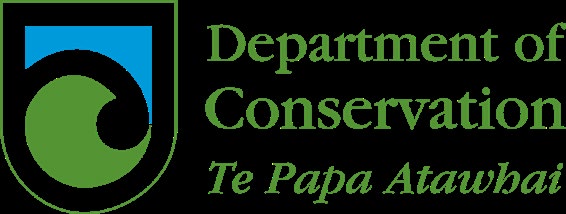
19-E-0523 / DOC-6042325
2 September 2019
T Benseman
via FYI.org.nz
Dear T Benseman
Thank you for your Official Information Act request to the Department of
Conservation, dated 5th August 2019. You requested the following:
Please provide a copy of any studies you have done on the increased risk your
workers pose to our native creatures by standing in the entrances of their
burrows/nests where scent is likely very high, then traipsing this scent over long
distances, thus increasing the likelihood of interdiction by predators, which are
then able to locate nests and kill the occupants.
Context to your request
We note that information previously provided by the Department under the Official
Information Act 1982 has subsequently been edited and republished on various
media and social media platforms. This has been conducted in a manner that
misrepresents scientific evidence and facts provided by the Department. In addition,
we are conscious that information released by the Department has been used by
others to misrepresent the work carried out by the Department to protect New
Zealand’s native species.
Bearing that in mind, we have decided to provide the following contextual
information as it may assist your understanding of some of the issues you have raised
in your request. This contextual information is also provided for the benefit of the
general public.
Visiting nests and burrows of native species
DOC staff may visit areas near nests and burrows of native species where it is
necessary to do so, for example,
• To collect eggs or capture animals for captive breeding programmes which
will enable them to breed with captive support and ultimately allow
endangered populations to recover;
• To translocate animals to alternative sites in circumstances where it is no
longer safe for them to remain within their original location, or, where there is
an opportunity to start a new population at another site for the purpose of
species recovery;
• To conduct research or monitoring of animal species within a particular
habitat or region;
• To attach bird bands, tags or transmitters on to birds and mammals for
monitoring purposes; and
• To remove or replace bird bands, tags or transmitters that have been attached
to birds or mammals for monitoring purposes.
Conservation House -
Whare Kaupapa Atawhai
PO Box 10 420, Wel ington 6143
Telephone (04) 471 0726, Fax (04) 381 3057
The importance of monitoring native species
The Department’s Biodiversity Monitoring and Reporting System provides
comprehensive information about New Zealand’s native species and biodiversity
across public conservation lands. This monitoring information:
• Provides a foundation of sound data to better inform effective management
planning and policy development;
• Improves understanding and reporting on the health of New Zealand’s
biodiversity and trends in ecological integrity;
• Reduces reliance on anecdotal evidence and expert advice by delivering
factual evidence to inform decisions and report on progress towards
outcomes;
• Improves DOC’s ability to compare between projects and know what
interventions worked best;
• Helps further identify what work should be focused on; and
• Helps DOC and New Zealand meet national and international reporting
requirements including state of the environment reporting.
The Department’s monitoring programme therefore forms a crucial part of
identifying threatened or endangered native species and ensuring that they are given
ample protection and support to increase their population size.
Your OIA request
We have searched for papers, internal reports and university theses that may contain
studies that are relevant to your request.
The following research paper falls within the scope of your request and is attached:
Item Date
Document description
Decision
1
24 June
Keedwell, R & Sanders, M (2002)
Released in full
2002
Nest monitoring and predator
visitation at nests of banded
dotterels. The Condor 104:899–902
This research paper discusses a study which tests whether visiting dotterel nests for
monitoring purposes increases the chances of those nests then being visited by
predators. The study also examines whether there is any correlation between the
direction of approach by the humans and the predators that visit the nests.
The study found that there was
no significant correlation between the proportion of
monitored nests that were visited by predators and the proportion of unmonitored
nests that were also visited by predators. The study also found that there was
no
evidence to suggest that the directions of approach of the humans and predators that
visited the nests were related, and predators approached nests from seemingly
random directions that did not correlate with human scent trails to nests. The study
concluded that “
approaching nests had little influence on how predators located
[those] nests”.

You are entitled to seek an investigation and review of my decision by writing to an
Ombudsman as provided by section 28(3) of the Official Information Act.
Please note that this letter (with your personal details removed) and enclosed
documents will be published on the Department’s website.
Yours sincerely,
Fathima Iftikar
Director (acting), Terrestrial Science Unit

